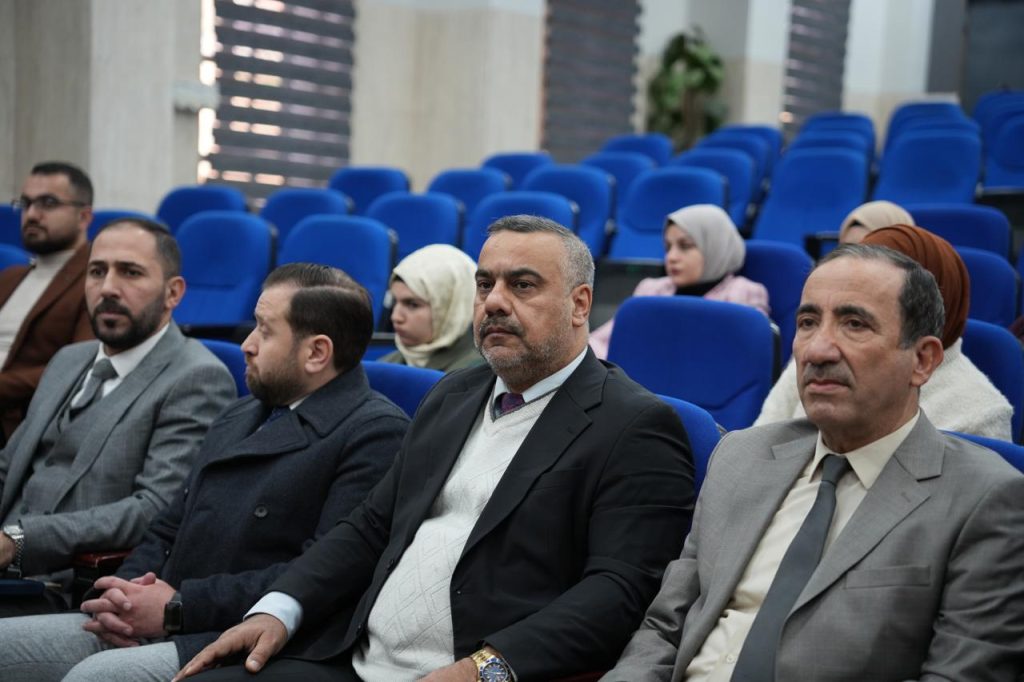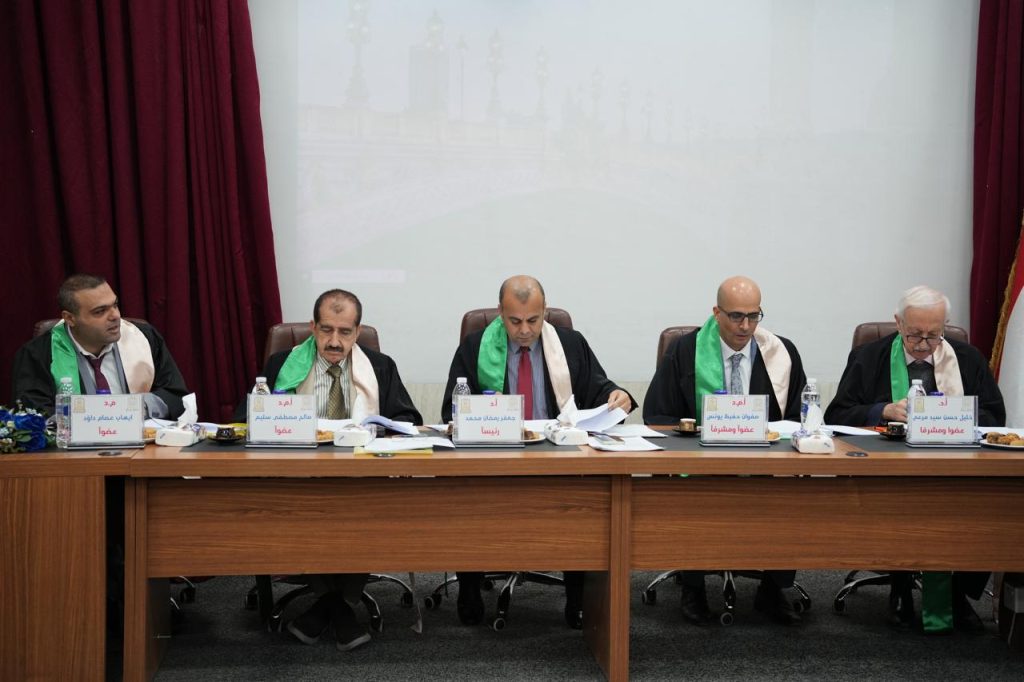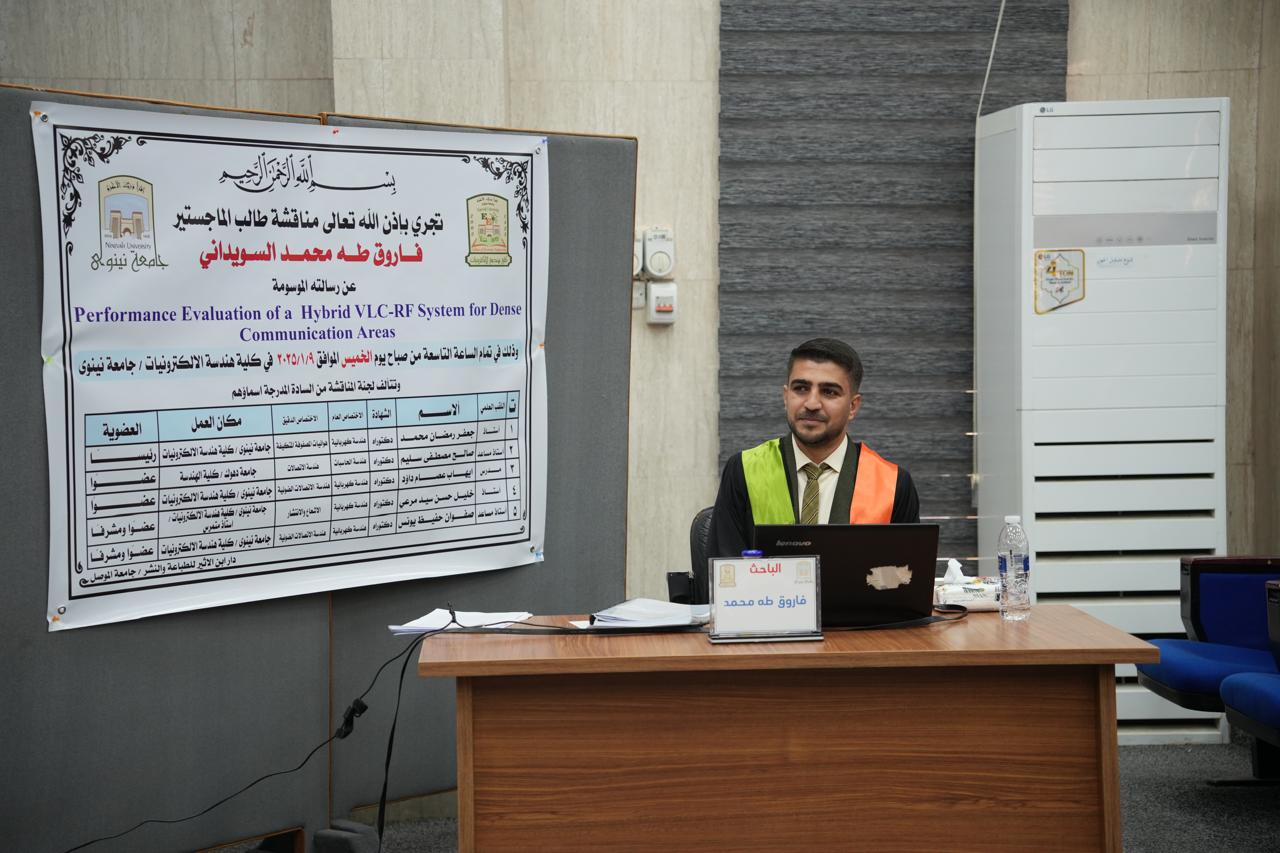A Master’s thesis at the College of Electronics Engineering, University of Ninevah, presented by researcher Farouk Taha Mohammed, studied the “Evaluation of a Hybrid Communication System Based on Visible Light and Electromagnetic Waves” to serve crowded areas. The research addresses the growing demand for wireless communication networks and the emergence of modern devices requiring high data transfer rates, which have led to interference issues and difficulties in reliable data transmission.
The thesis defense was attended by the President of the University, Prof. Dr. Osama Al-Mashhadani, the Dean of the College of Electronics Engineering, Prof. Dr. Khaled Khalil Mohammed, his academic and administrative deputies, heads of scientific departments, and a group of faculty members and postgraduate students.
The thesis proposed the idea of using electromagnetic waves (RF) in addition to visible light (VL) in a hybrid communication system to address these challenges. Hybrid communication systems offer significant advantages, including mitigating many limitations of traditional wireless communication systems. These advantages include providing a wide usage spectrum, higher channel capacity, minimal interference, and secure data transmission.
The thesis addressed the following:
1. Selection of a Communication Model: A study of crowded environments, using the dining hall at the student center of Mosul University as a case study.
2. Coverage Area Analysis: Evaluation of the proposed hybrid system’s coverage zones.
3. Access Points and Channel Capacity: Analysis of the number of access points and the channel capacity allocated for each user.
4. Interference and Noise: Addressing interference and noise caused by an increase in access points in crowded areas using the proposed system.
5. Quality of Service Algorithm (QoS): Development of a QoS algorithm to improve the overall performance of the integrated hybrid network.
The study aimed to simulate and evaluate the hybrid system by analyzing parameters such as coverage area, interference, and channel capacity. Simulations were conducted using MATLAB for the VLC system and Wireless In-Site software for the RF system.
The examination committee consisted of:
1. Prof. Dr. Jafar Ramadan Mohammed – Chair
2. Asst.Prof. Dr. Saleh Mustafa Salim – Member
3. Asst.Prof. Dr. Ihab Essam Dawood – Member
4. Prof. Dr. Khalil Hassan Sayed Murai – Member
5. Asst. Prof. Dr. Safwan Hafidh Younis – Member and Supervisor



